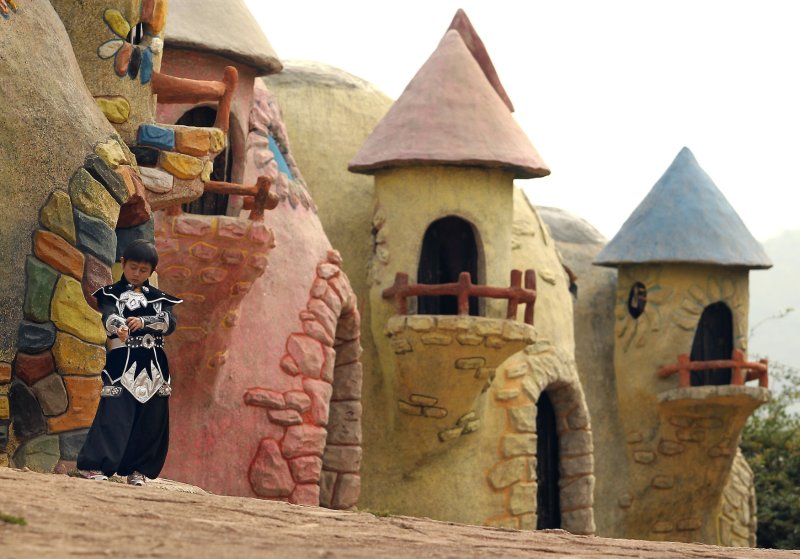A dwarf walks to his 'mushroom' hut prior to the opening of a show featuring dwarves singing, dancing and acting during a twice-daily performance for tourists at their "Kingdom of the Dwarves" located in a mountain commune just outside of Kunming, the capital of China's southern Yunnan Province, on September 25, 2012. A community of Asian dwarves has set up its own village to escape discrimination and bullying from normal sized people, yet hoping to attract tourist dollars from the "theme park' of fairy tale characters they've managed to build. UPI/Stephen Shaver |
License Photo
SEATTLE, May 25 (UPI) -- Most discrimination in the United States is not caused by those intending harm to others, but from those helping friends, family or those similar to them.
Psychologist Tony Greenwald of the University of Washington and Thomas Pettigrew of the University of California, Santa Cruz, reviewed scientific research on discrimination from the last five decades.
The study, published online in American Psychologist, found observed discrimination in studies was the result of those helping rather than hurting someone. However, most researchers defined discrimination based on negative attitudes and hostility.
"We can produce discrimination without having any intent to discriminate or any dislike for those who end up being disadvantaged by our behavior," Greenwald and Pettigrew said in a statement.
Most think discrimination the result of hostility such as a white person saying anti-black rhetoric, or someone making slurs at a gay couple, but discrimination is the result of more subtle acts, which many don't recognize as causing disadvantage to anyone, the researchers said.
For example, a manager conducts reviews of two employees and both fall between two performance categories. The manager gives a higher appraisal to the employee whose child is friends with her child, resulting in a promotion and salary increase, while the other employee receives a smaller raise and no promotion. Did the manager consciously discriminate against the second employee, or boost someone with which she had an "ingroup" connection? the researchers asked.
"We usually think first of demographic characteristics like age, race, sex, religion and ethnicity as establishing an ingroup, but there are also ingroups based on occupation, neighborhood and schools attended, among other things," Greenwald said.
"Outgroups are those with whom you don't identify."
Racial ingroup favoritism can be very subtle. For instance, if a person works in an office that is mostly white, employees might be asked to recommend someone for a job opening. Those white are more apt to recommend someone who is like them and the rest of their ingroup.















